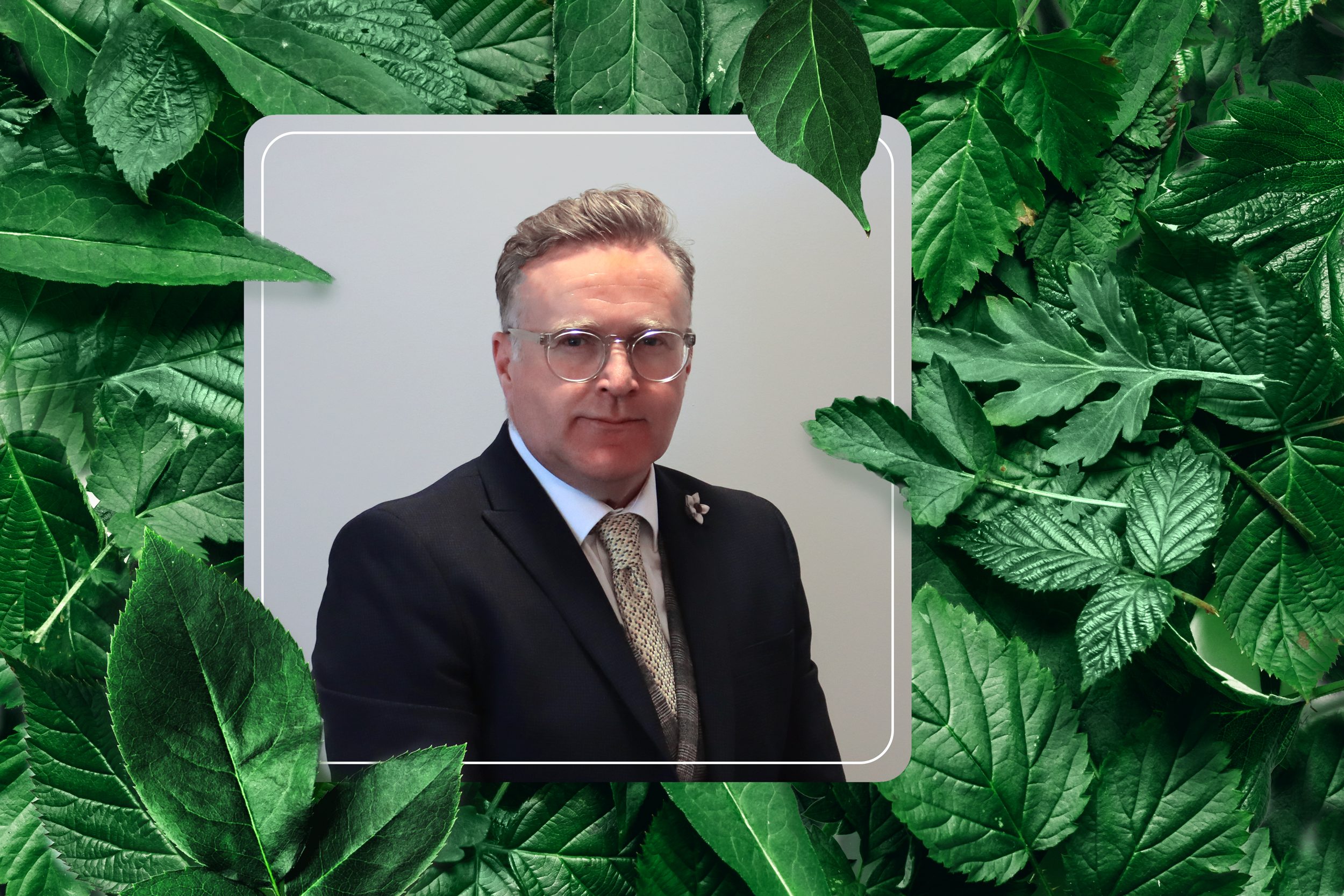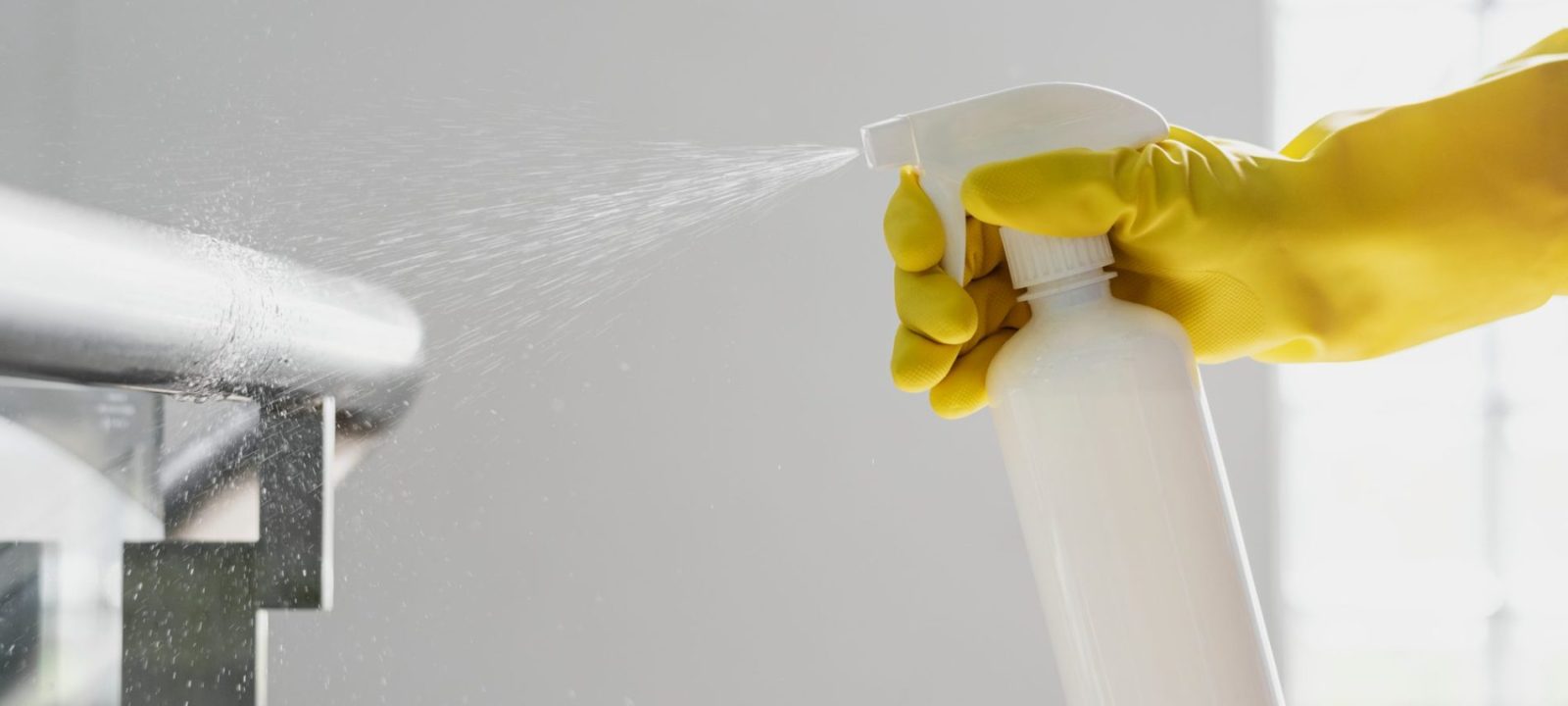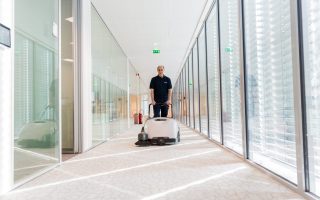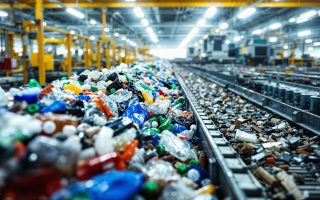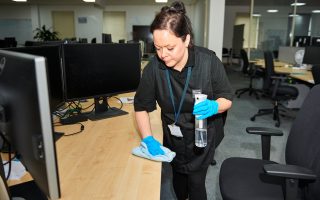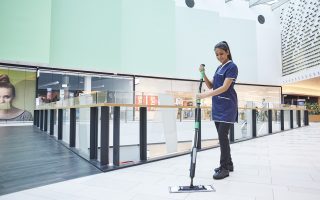Since its development in 18th century France, bleach has become a popular cleaning product for both domestic and commercial use. It was originally used to remove colour or stains from clothing but with the addition of a chlorine component (chloride of lime), discovered by Scotsman Charles Tennant in 1799, bleach was found to have exceptional cleaning and disinfecting qualities.
However, over time, it has become clear that there are many dangers associated with using bleach, not just towards humans, but the environment too. That said, bleach is not banned in workspaces in the UK. It is up to individual companies and organisations to assess whether it is safe for use or not. Since it is considered to be a hazardous substance, bleach is covered by a COSHH (Control of Substances Hazardous to Health) Assessment.
This blog post will explore whether or not it is safe to use bleach in workplaces and the kinds of alternative environmentally-friendly cleaning products.
Is cleaning with bleach harmful?
Is bleach dangerous? The answer depends upon how and where it is used – hospitals, restaurants and schools should be particularly cautious. We first need to establish the effects of bleach upon humans and the environment.
How toxic is bleach to humans?
- Droplets from spray bottles containing diluted bleach can be inhaled by people
- The fumes from bleach can make asthma worse, or cause someone to develop this lung condition
- Bleach fumes are more harmful to children as their lungs are still developing as well as pets
- Bleach can irritate skin and eyes
- When bleach is combined with another chemical such as ammonia it can cause a poisonous gas
- Bleach can cause a build-up of chloroform, a known cancer-causing chemical, in the air
Is bleach bad for the environment?
- Bleach releases chlorofluorocarbons (CFCs) into the air which can contribute to global warming
- Bleach can lead to water and soil contamination and air pollution
- It can damage aquatic life if it enters rivers, lakes and seas
- If bleach is not disposed of correctly, it can be harmful to water supplies and vegetation, leading to the destruction of habitats and eco-systems
What precautions should be taken when using bleach?
Using bleach can be dangerous, but if your COSHH assessment allows it, here are some tips for safe usage:
- Follow the instructions on the container
- Do not mix bleach with other chemicals
- Always wear gloves and eye protection
- Make sure the room is ventilated
- Clean surfaces before disinfecting with bleach
- Use cold water for diluting bleach to reduce fumes
- Store the bottle of bleach safely and make a note of the received-by date (bleach starts to degrade after six months)
- Hire a commercial cleaning company like Samsic UK to ensure safe, expert cleaning
Issues to be aware of when using bleach
- Bleach does not get rid of limescale, it whitens it
- Bleach can rot fabric such as cloths and mops, reducing their life span and adding to your costs
- Bleach can make flooring porous, making them harder to clean as time goes on and increasing the need for updating flooring
- Bleach is clear, and unless labelled and stored safely, could be mistaken for something else
Can bleach be used in schools, care homes, restaurants and hospitals?
Unless it is ruled out via a COSHH assessment, bleach is not banned in workspaces. It kills 99.9 per cent of germs and is safe to use if precautions, like those mentioned above, are followed. While many people are repulsed by the odour of bleach, others don’t think a space has been effectively cleaned unless they can smell it. It’s evident that there needs to be more dialogue and education around eco-friendly cleaning products. Cleaning and disinfecting has been more important than ever since the fight against COVID-19. Let’s take a look at the risks posed when using bleach in particular spaces:
Schools
Bleach can be a dangerous substance in schools. It is essential that chemicals are stored safely, with no possibility of children getting access, and that cleaning operatives know how to keep themselves and the pupils out of harm’s way. Due to its colourless nature, a child may be tempted to ingest bleach or touch it. Cleaning teams need to be highly trained and experienced in working with chemicals, which is why it’s always a good idea to consider hiring a commercial cleaning company like Samsic UK.
Care homes
It’s essential to have a COSHH strategy for care homes. Employees need to have regular training in dealing with hazardous substances like bleach to keep residents, visitors and themselves safe. Careful use of bleach in residents’ rooms and the kitchen is a priority.
Commercial kitchens
Given the nature of food preparation, it’s a good idea to find other disinfectants than bleach. While bleach is effective at removing germs from clean surfaces, it is harmful to health if digested or inhaled in an enclosed, warm environment, especially over a long period of time.
Hospitals
The NHS Staff and Wellbeing Group has developed guidelines for working with hazardous substances such as bleach. It was devised to help avoid respiratory and skin conditions developing due to exposure to certain chemicals. A 2017 survey of UNISON members found that 60 per cent of NHS respondents used chlorine-based disinfectants and more than half suffered side effects.
What are natural alternatives to bleach?
You might want to consider some of the natural, eco-friendly cleaning and disinfecting alternatives to bleach:
Baking soda
For washing laundry, add half a cup of baking soda to whiten sheets, towels and table cloths, and remove stains and smells.
Vinegar or lemon juice
Pre-soak textiles in white vinegar or lemon juice mixed with water before washing in order to whiten and remove smells. Vinegar is also a good disinfectant – look for one with a high acetic acid content – which can kill the likes of salmonella and E.coli.
Hydrogen peroxide
Be sure to wear gloves and don’t mix with anything else, but a water-based solution of 35 per cent hydrogen peroxide is an effective whitener and cleaner – it’s especially good for deep-cleaning toilets.
Samsic’s eco-friendly alternatives to bleach
Samsic is internationally renowned as an innovator. We are always working on new ideas to improve our products and services and make them sustainable and environmentally friendly. While bleach is not banned in UK workspaces, there are other, kinder products. Here are our eco-friendly alternatives to bleach:
Toucan Cleaning Solutions
Toucan Eco-Active is a chemical-free combined disinfectant and cleaning agent. The solution is made on your healthcare facility’s premises by mixing water and salt, which is then electrolysed. It’s simple, safe and quick to make and effectively cleans surfaces.
Antimicrobial surface coating
Samsic Nordic Chem is an antimicrobial spray-on coating that protects all kinds of surfaces for up to 90 days. It’s safe to touch 24/7 without constant need for cleaning and disinfecting, making it ideal for all kinds of environments. The non-sticky surfaces can be wiped down quickly and easily. Unlike bleach, there is no offensive odour or risk to health from touch.
Contact us to find out how Samsic UK can help make your workspace clean and safe without using bleach.

